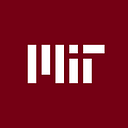Footnotes to “Remote Learning: Transforming liability into opportunity”
1.) Annually, more than 640 MIT STEM students, from over 18 different MIT departments, along with students from Harvard and Wellesley, seek pre-registration in the electives’ lotteries, for less than 15% of available roster spots.
(return to “Remote Learning: Transforming Liability into Opportunity”)
2.)“Mariam Dogar, Megan Diehl, and Emily Chen in 11.111; Aigneis Frey, Lily Zhang, Yara Komaiha, and Shreya Pandit in 11.011. Every TA cohort brings their own spin while building on the legacy of a previous cohort. I equate the design of our class sessions with playing a season in a team sport. Each TA cohort can have a unique impact let alone on the students, but how we experience the field itself, to the extent that I make sure to honor their specific brilliance and set the stage for their own voices to shine. This philosophy manifests itself in many ways. For example, each TA appointment is conceived as part-time in order to optimize performance by ensuring that their individual and shared journey is part and parcel of their larger campus passions, and as such, is informed by a real interdisciplinary outlook on life. The TA action items are co-built around the strengths each person showcased when they were students in the first place, with an emphasis on the consistency and character with which they examined, tested, and wielded the materials. Trust is thus the foundation of what we do because everything has been experienced, earned, and proven: from the ability to accurately measure the temperature in the room to seize a window of opportunity, to the capacity to monitor the right data points to advance an argument, to the wherewithal to remain flexible, creative, and focused under pressure. I see the faculty role as that of a coach: when you deploy players in the field, you do so embracing the magnitude of their abilities, co-designing opportunities and situations that fit and enhance their own creativity and impact (not the other way around). Because Srimayi Tenali, Zulkayda Mamat, Zoe Gong, Ariel Brito, Christien Williams, and Griffin Ansel contributed so meaningfully in recent years, infusing peer-to-peer coaching, data visualizations, and video deliverables with impactful transformations, the subsequent teams are ready to reach new milestones. Sure enough, the current team, Gabrielle Finear, Kiara Wahnschafft, Janice Yang, and Diego Colin, is innovating across the board, with breakthroughs in exercise-design, debrief structure, and coaching depth at an astounding pace, all in the middle of a pandemic. This is what happens when you nurture a culture where learning compounds at every step, every season, because all that you do, on and off the pitch, matters. You then add to this mix the wildly creative, world-class, and relentlessly driven student cohorts, each with its own unique combination of core interests and disciplinary backgrounds. All entrusted with the clear message that effective negotiation and decision-making hinges on co-created processes and outcomes: as such, each individual is genuinely responsible not only for the quality of their own learning, but that of their peers. How extensively you prepare, how intensely you negotiate, and how sincerely you reflect, on a daily basis, impacts the world around you, well beyond the classroom and far after you’re officially finished with the materials. In sum, my view of pedagogy (and life for that matter) is one that honors the legacy of each colleague.
(return to “Remote Learning: Transforming Liability into Opportunity”)
